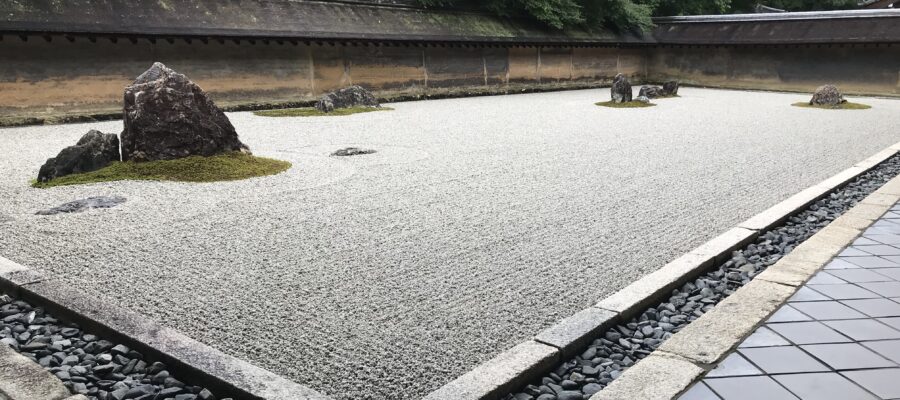想像力で見る石庭
海外からの研修生に対し日本文化を紹介するプレゼンの中で、必ず西洋の庭の比較対象として龍安寺の石庭を例示しています。想像力を働かせて見てくださいと、いつも説明していますが、再度自分の目で見てイメージを焼き付けておこうと久々に訪問しました。
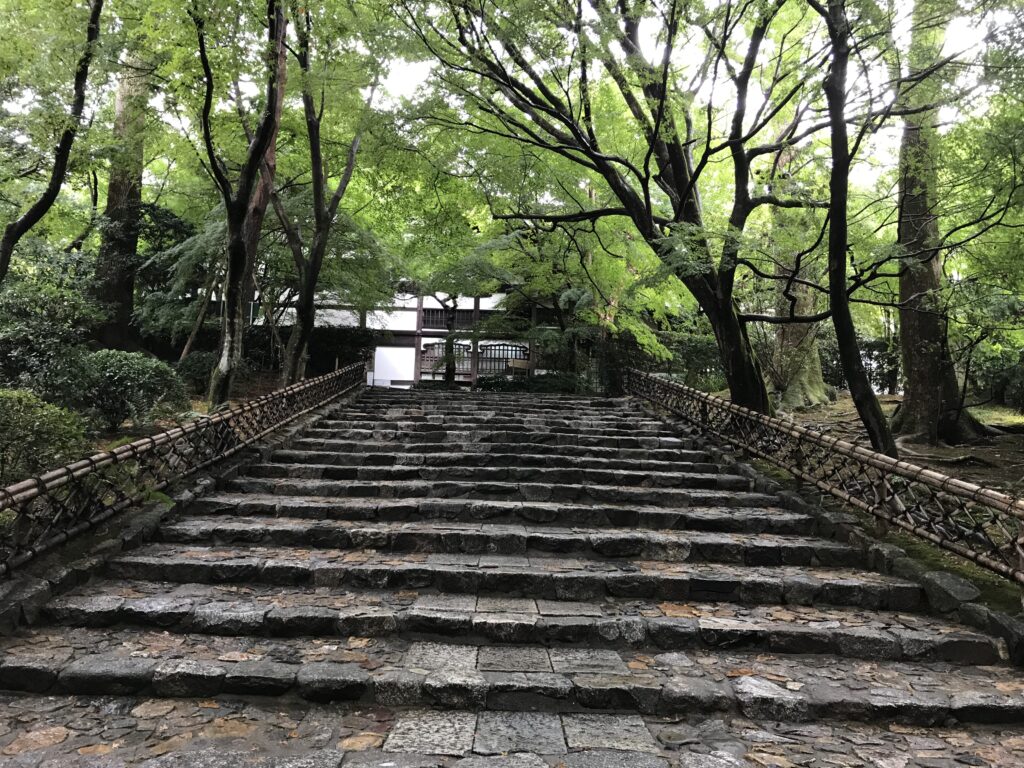
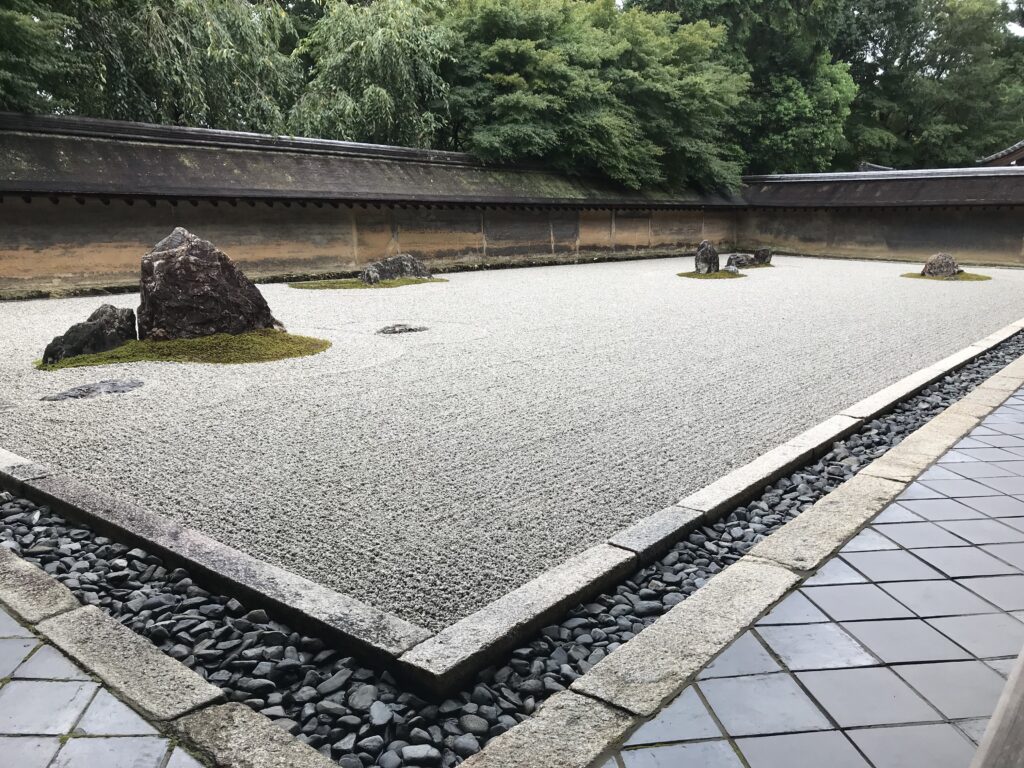
多くのガイドさんはここで、枯山水の話や、石がいくつ見えるか、虎の子渡しの話をされると思います。中には、右側の塀が前方に行くにしたがい低くなっている、いわゆる遠近法による庭の奥行き感を広げている説明もされているでしょう。
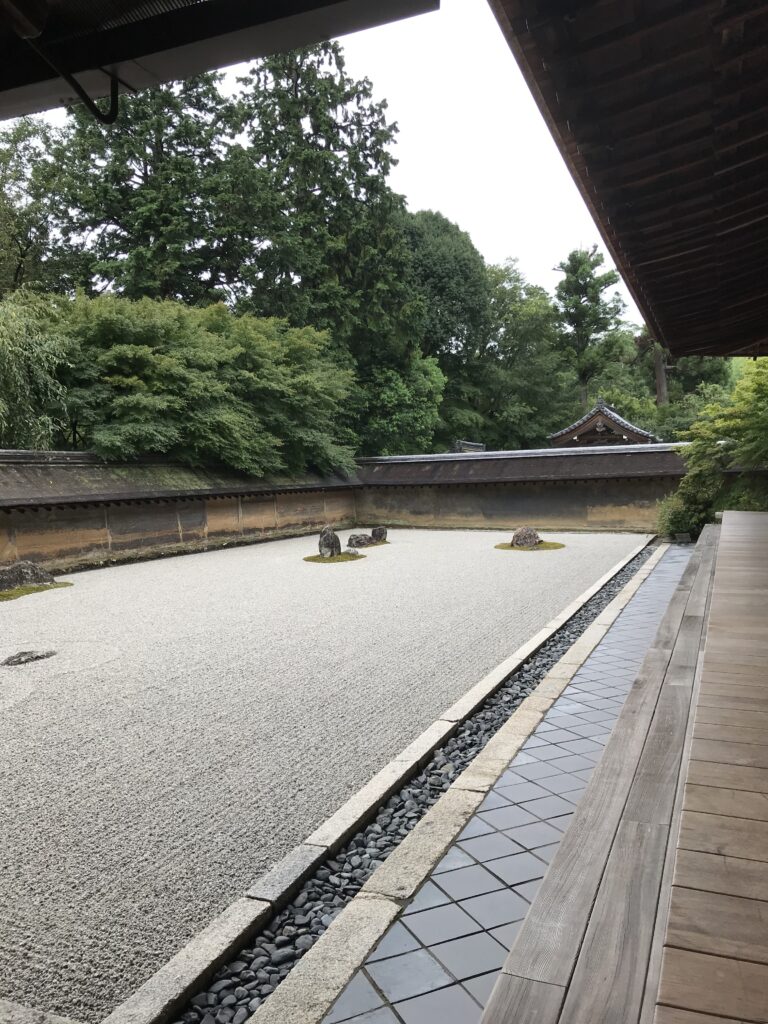
吾唯足知の蹲踞
もう一つ、日本人には説明しやすいのですが、漢字を知らない海外の方にはデザインを説明しずらい、茶席 藏六庵の蹲踞はどうでしょうか。「吾唯足知」を共通する「口」の字を中心にデザインされていますが、漢字圏以外の方には難しいですね。
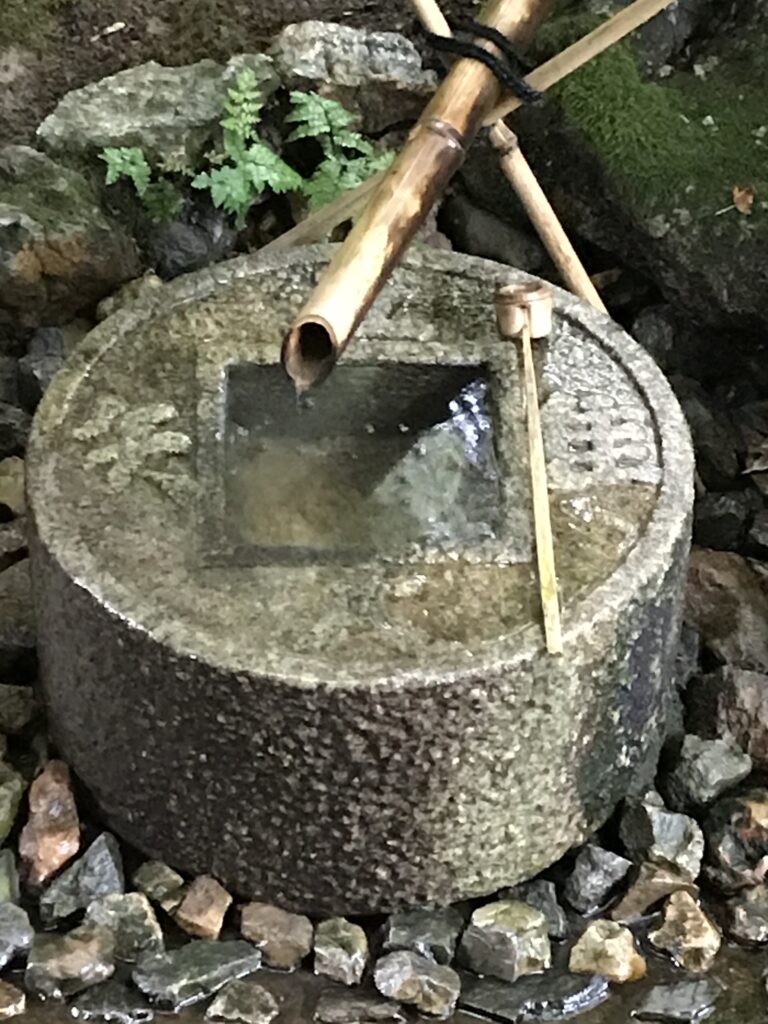
大きな池と大きな石
久々に龍安寺へ行って、すごく大きなお寺だと再認識しました。池を一周してみましたが、いろんな植物が植えてあります。池の水面にも広く水草が浮いています。一番面白かったのは、石庭は小さな石だけですが、池の周りには大きな石が据えられていて見ごたえがあります。
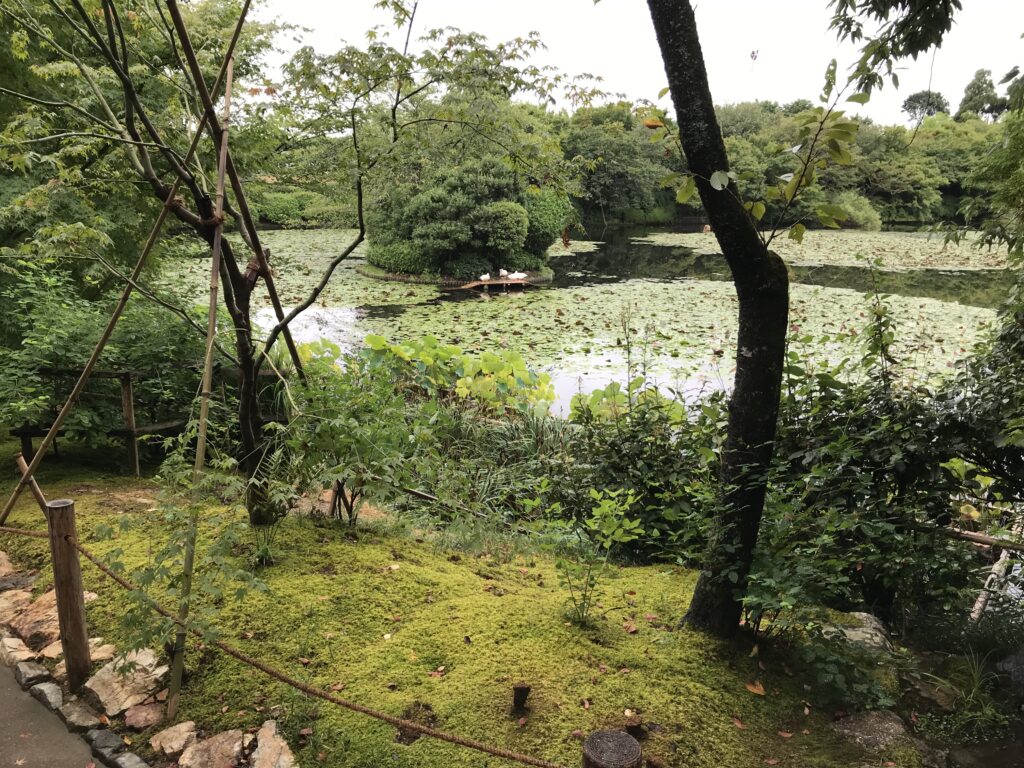
色も種類が多く、形も変化に富んでいて、テーマごとに何石か集めているようにも見えます。事前勉強が足りないので、それぞれの石の意味を知らなかったのですが、歩いている内に景色が次々に変わるのが、特によかったと思います。(完)
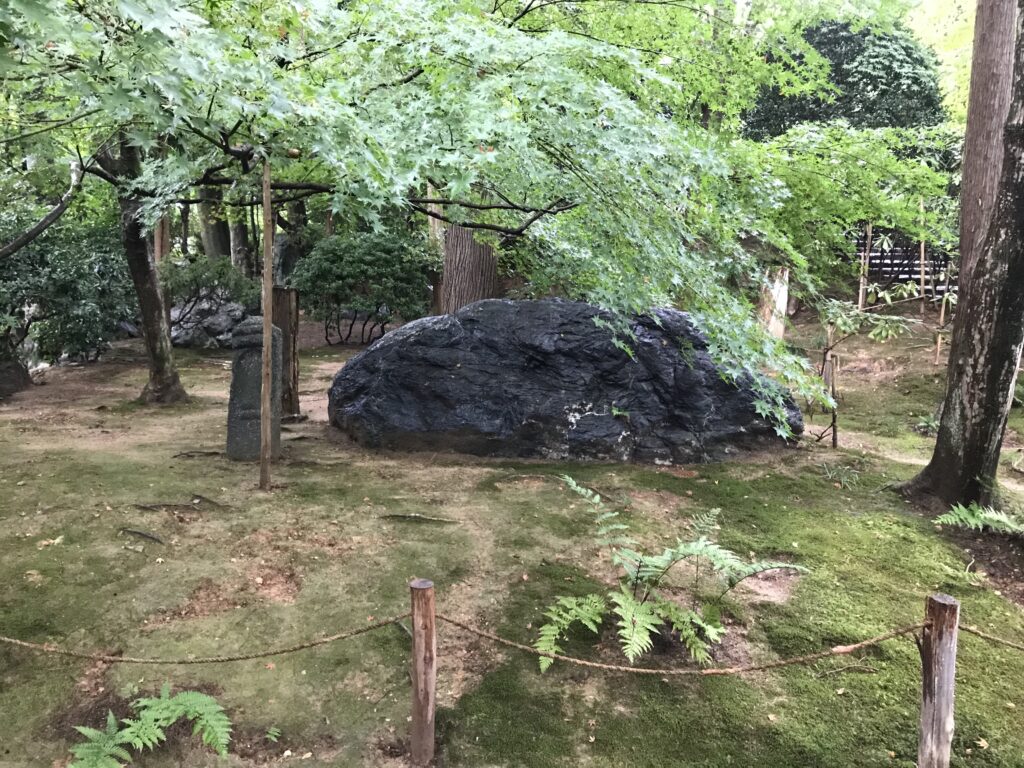
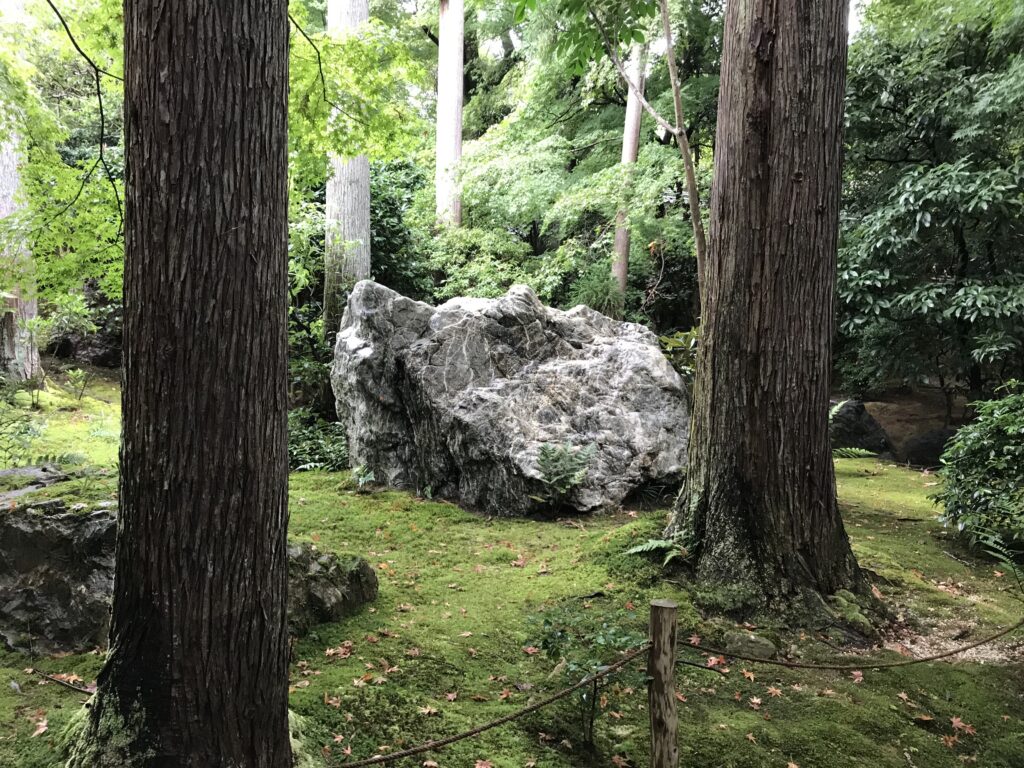
龍安寺の御朱印
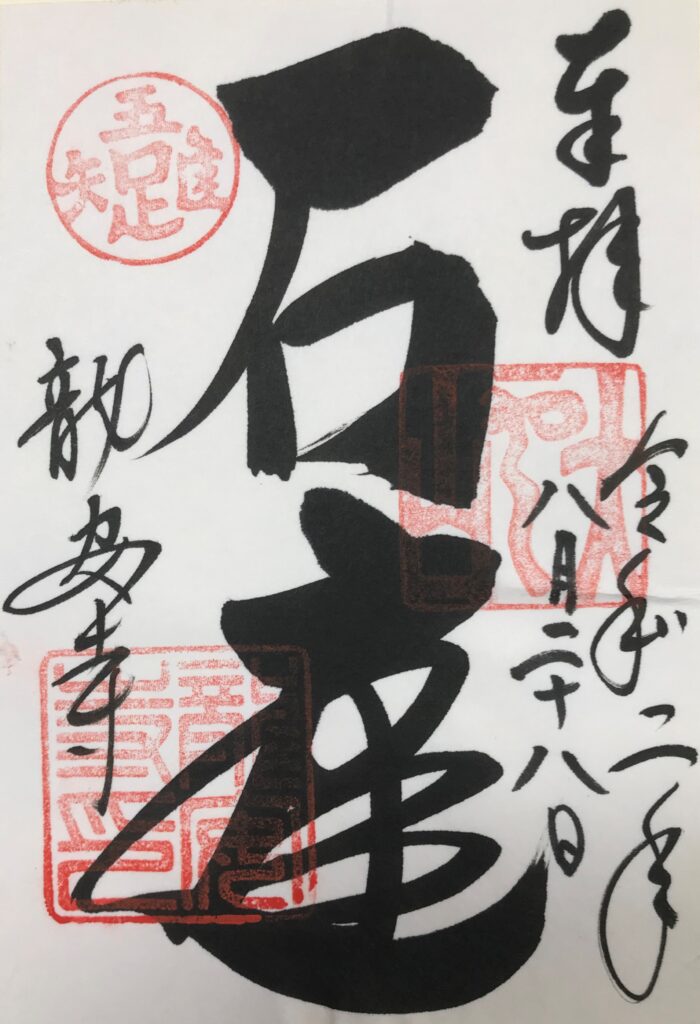
龍安寺の石庭が紹介されている書籍
宮元健次さんの「日本庭園のみかた」に龍安寺の石庭が紹介されています。石の配置に付いて西洋のパースペクティブの影響に付いて持論を紹介されていて、西洋からのお客さんへのトークに使える内容だと思います。庭園についてより深く学びたい方にお勧めです。
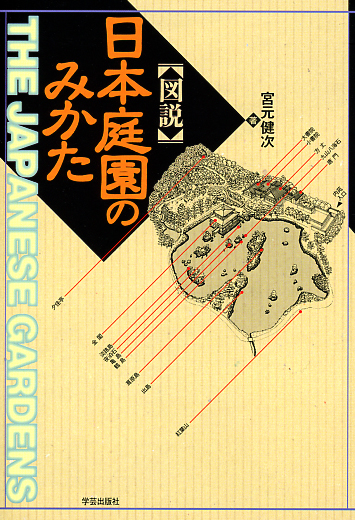
価格:2,090円
(2021/6/1 14:05時点)
感想(1件)
Ryoanji Temple (English)
See Stone Garden with your Imagination
In my presentations introducing Japanese culture to trainees from overseas, I always use the stone garden at Ryoanji Temple as an example to compare with Western gardens. I always explain to them that they should use their imagination to see the garden, but I visited there after a long time to see it again with my own eyes and keep the image into my mind.
Many guides talk about karesansui (dry landscape garden) here, how many stones you can see, and tiger’s river passing. Some of them will probably explain that the wall on the right side of the garden gets lower as you go forward, expanding the sense of depth of the garden through so-called perspective.
Hand basin of “I know only my own sufficiency”.
One more thing that is easy to explain to Japanese people, but difficult to explain to foreign people who do not know Chinese characters, is the stone wash basin at the Zorokuan tea ceremony house. It is designed around the character for “mouth,” which is a common expression of “I know only my own sufficiency,” but it is difficult for people outside the Chinese character world to understand.
Big pond and big stones
It’s been a while since I’ve been to Ryoanji Temple, and I was reminded that it was a very big temple. I walked around the pond, which was planted with various plants. The surface of the pond was also covered with a wide variety of water plants. The most interesting thing was that the stone garden had only small stones, but there were large stones around the pond, which was a sight to behold.
There are many different colors and varied shapes, and it looks as if several stones have been collected for each theme. I didn’t know the meaning of each stone because I didn’t study enough beforehand, but I think it was especially nice to see the scenery change one after another as I walked. (End)
Temple Ryoanji (Français)
Voir le Stone Garden avec votre imagination
Dans mes présentations de la culture japonaise aux stagiaires étrangers, j’utilise toujours le jardin de pierres du temple Ryoanji comme exemple pour le comparer aux jardins occidentaux. Je leur explique toujours qu’ils doivent faire appel à leur imagination pour voir le jardin, mais que je m’y suis rendu après une longue période pour le revoir de mes propres yeux et garder l’image dans mon esprit.
De nombreux guides parlent du karesansui (jardin paysager sec) ici, du nombre de pierres que l’on peut voir, et du passage de la rivière du tigre. Certains d’entre eux expliqueront probablement que le mur du côté droit du jardin s’abaisse au fur et à mesure que l’on avance, élargissant ainsi la sensation de profondeur du jardin grâce à ce que l’on appelle la perspective.
Bassin de main de “Je ne connais que ma propre suffisance”.
Une autre chose qui est facile à expliquer aux Japonais, mais difficile à expliquer aux étrangers qui ne connaissent pas les caractères chinois, est le lavabo en pierre de la maison de cérémonie du thé de Zorokuan. Il est conçu autour du caractère “bouche”, qui est une expression courante de “je ne connais que ma propre suffisance”, mais il est difficile à comprendre pour les personnes étrangères au monde des caractères chinois.
Grand étang et grosses pierres
Cela faisait longtemps que je n’étais pas allée au temple Ryoanji, et cela m’a rappelé que c’était un très grand temple. J’ai fait le tour de l’étang, qui était planté de diverses plantes. La surface de l’étang était également couverte d’une grande variété de plantes aquatiques. La chose la plus intéressante était que le jardin de pierres n’avait que des petites pierres, mais il y avait de grandes pierres autour de l’étang, ce qui était un spectacle à voir.
Il y a beaucoup de couleurs différentes et de formes variées, et on dirait que plusieurs pierres ont été rassemblées pour chaque thème. Je ne connaissais pas la signification de chaque pierre parce que je n’ai pas assez étudié à l’avance, mais je pense que c’était surtout agréable de voir les paysages changer les uns après les autres au fur et à mesure que je marchais. (Fin)
